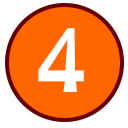Reflecting on Your Project
- Begin by reading through the feedback that you received from your peer review partners on your project draft.
- Review the rubric for the project, and note places where you still need to work to meet your goals.
- Think in particular about ways to improve your work. Even if your project seems done to you, you should think about what you can do to make it even better. Note that your effort throughout the project matters so find ways to use the remaining time on the project to improve your work.
Writing a Revision Plan
- Based on your reflection, compose a revision plan for the project in your word processor, following the instructions on pp. 116-118 of Writer/Designer.
- Include the link to the current draft of your project in your revision plan.
- If desired, submit any additional materials that support your revision plan (e.g., a mock-up of a new section, a storyboard for a scene you will add, a chart showing a new design or structure).
- Submit your word processor file and any other attachments in the Project 4 Revision Plan assignment in Canvas. You’ll find it on the Assignments page.
Expectations for Your Revision Plan
Average (C) Work: Your revision plan answers all of the questions included in the revision plan section of Writer/Designer. It provides simple, basic details on how you will revise the project. It sticks to more cursory changes to the project. For example, a cursory revision would focus on fixing typos and correcting some broken links. Your revision plan will show that you will put in an average amount of effort before you turn in the project.
Above-Average (B) Work: Your revision plan goes beyond simple changes and shows a concerted effort to rethink and improve the current draft of your remix. An above-average plan might talk about cutting or completely rewriting a section of the remix, redesigning the look and feel of a section, and/or changing the way images are incorporated. Your revision plan will show that you will put in a reasonable amount of effort before you turn in the project.
Excellent (A) Work: An excellent revision plan will talk not only about what changes you would make, but specifically how you would change things. Note that you may include whatever makes sense for your revision plan (e.g., a mock-up of a new section, a storyboard for a scene you will add, a chart showing a new design or structure). Your revision plan will show that you will put in a considerable amount of effort before you turn in the project.
 Any questions about
Any questions about 

 write and design web content, use digital images (and if appropriate, video and audio), and recognize basic HTML and CSS syntax.
write and design web content, use digital images (and if appropriate, video and audio), and recognize basic HTML and CSS syntax.








